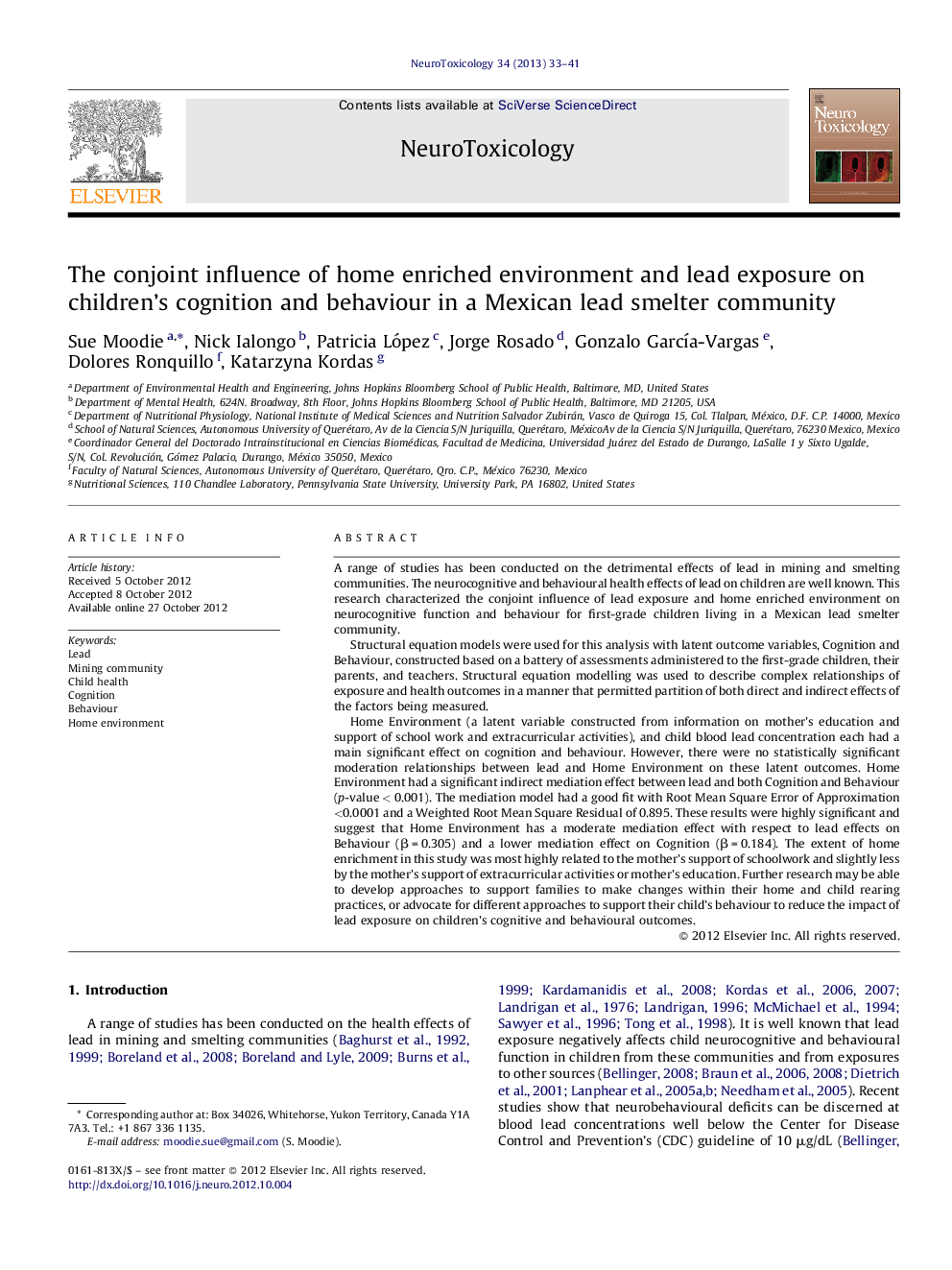| Article ID | Journal | Published Year | Pages | File Type |
|---|---|---|---|---|
| 5855127 | NeuroToxicology | 2013 | 9 Pages |
A range of studies has been conducted on the detrimental effects of lead in mining and smelting communities. The neurocognitive and behavioural health effects of lead on children are well known. This research characterized the conjoint influence of lead exposure and home enriched environment on neurocognitive function and behaviour for first-grade children living in a Mexican lead smelter community.Structural equation models were used for this analysis with latent outcome variables, Cognition and Behaviour, constructed based on a battery of assessments administered to the first-grade children, their parents, and teachers. Structural equation modelling was used to describe complex relationships of exposure and health outcomes in a manner that permitted partition of both direct and indirect effects of the factors being measured.Home Environment (a latent variable constructed from information on mother's education and support of school work and extracurricular activities), and child blood lead concentration each had a main significant effect on cognition and behaviour. However, there were no statistically significant moderation relationships between lead and Home Environment on these latent outcomes. Home Environment had a significant indirect mediation effect between lead and both Cognition and Behaviour (p-value < 0.001). The mediation model had a good fit with Root Mean Square Error of Approximation <0.0001 and a Weighted Root Mean Square Residual of 0.895. These results were highly significant and suggest that Home Environment has a moderate mediation effect with respect to lead effects on Behaviour (β = 0.305) and a lower mediation effect on Cognition (β = 0.184). The extent of home enrichment in this study was most highly related to the mother's support of schoolwork and slightly less by the mother's support of extracurricular activities or mother's education. Further research may be able to develop approaches to support families to make changes within their home and child rearing practices, or advocate for different approaches to support their child's behaviour to reduce the impact of lead exposure on children's cognitive and behavioural outcomes.
⺠Novel use of structural equation model and latent variables for environmental health. ⺠Model conjoint effect of lead exposure and home environment on cognition and behaviour. ⺠Lead negatively affects home environment, cognition and behaviour. ⺠Home enrichment highly related to the mother's support of schoolwork. ⺠Enriched home environment reduces detrimental lead effects on cognition and behaviour.
